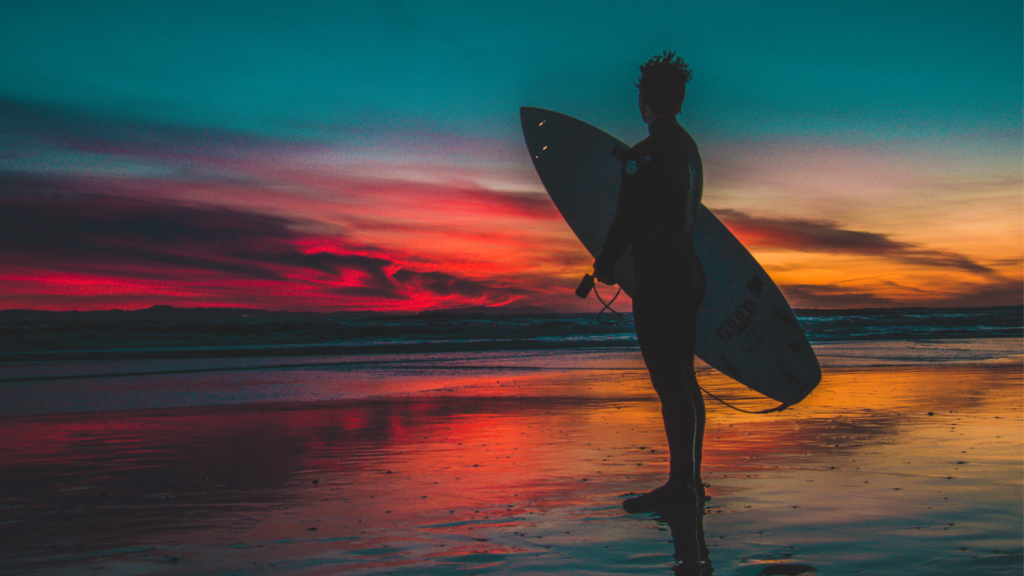Want to know the best times you can catch the perfect swell in Fiji? You can surf all year round in Fiji but if you want the best conditions why not time your trip to coincide with truly spectacular waves? In this guide, we’ll explore the best times to surf, providing insights into each season’s unique characteristics.
Seasonal Breakdown
Fiji has two main surfing seasons – winter and summer. Winter is for experienced surfers who want bigger waves, reaching 2-3 meters and sometimes even 4-5 meters due to strong south winds. It’s more challenging, and mostly advanced surfers go for it.
On the other hand, the warm summer season is better for beginners to learn and practice, with calmer winds and shorter swells. Keep in mind that summer surfing has its own complexities, and the waves vary in different places. So, choose your surf spots in Fiji based on your skill level.

Summer (November to April)
During Fijian summer (November to April), the Mamanucas and Coral Coast usually have small waves for surfing. However, when there are swells during this time, the winds are often favorable. Taveuni, located on the opposite side of Fiji, tends to have more consistent swells in the summer because of its open surf window.
- Highlights: Summer brings consistent swells, warm waters, and favorable weather conditions.
- March-April: March and April is when the surf starts to pick up and get a bit feisty.
- Best Locations: Cloudbreak, Restaurants, and Frigates Pass.
- Considerations: Be prepared for occasional heavy rain and tropical storms.

Autumn (May to July)
Fiji’s autumn/winter (May to October) is famous for powerful South swells and offshore winds. It’s the time for impressive Cloudbreak waves, incredible barrels, and great weather. The fact that the World Tour holds its Fiji event at Cloudbreak in May gives you a clue about the amazing waves during this season.
- Highlights: Autumn offers clean waves, strong swells and pleasant temperatures.
- Highest intensity: If you’re going to write home about a Fijian big wave experience, it will probably be in the July period.
- Best Locations: Tavarua, Restaurants, and Desperations.
- Considerations: Smaller crowds compared to the summer season.
Winter (August to October)
The waves are still big in August and September with a gradual die-down in October heading into summer. If you’re an intermediate surfer who want to try the reefs this might be the ideal time for you.
- Highlights: Winter brings powerful swells, delivering some of the biggest waves of the year.
- No Crowds: Between October and February you’ll be avoiding most tourists and enjoying uncrowded waves.
- Best Locations: Cloudbreak, Restaurants, and Wilkes Passage.
- Considerations: Increased wave size requires advanced surfing skills.

Factors Influencing Surf Conditions
- Swell Direction: Fiji’s reefs respond differently to various swell directions. North swells often light up breaks on the outer reefs, while south swells target inner reef breaks.
- Wind Conditions: Offshore winds (blowing from the land towards the ocean) create clean waves, enhancing the surfing experience. Trade winds are prevalent in Fiji, contributing to optimal surfing conditions.
- Tidal Movements: Tides play a crucial role in wave quality. Mid to high tides often produce ideal surfing conditions, especially on certain breaks.
Tips
- Crowd Levels: Fiji’s popularity peaks during the summer season, leading to larger crowds. For a more tranquil experience, consider visiting during autumn or winter.
- Accommodation: Plan your stay at surf-centric resorts or islands to maximize your access to the best breaks.
- Local Insights: Connect with local surf guides or instructors to gain valuable insights into current conditions and hidden gems.
Fiji’s surfing scene offers a year-round playground for wave enthusiasts. Whether you seek the adrenaline rush of large swells or the mellow waves of the off-season, Fiji’s diverse surfing calendar ensures there’s a perfect wave for every surfer.





